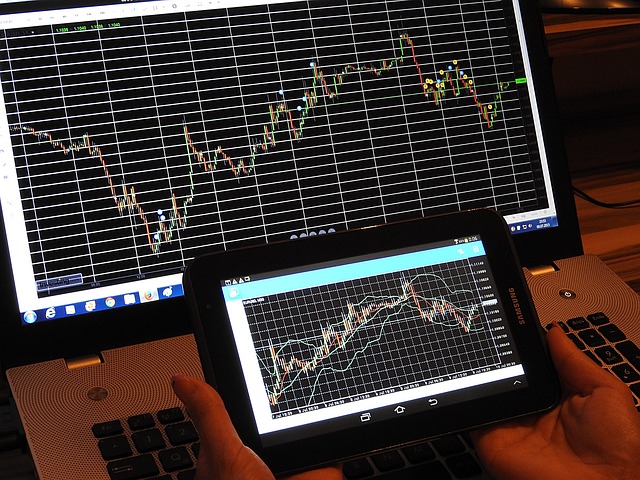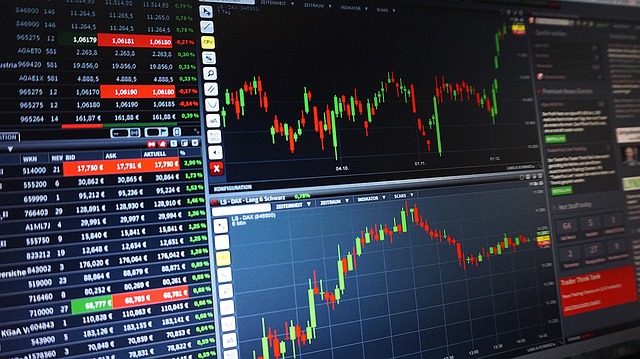The Revolution of Automated Crypto Trading: Opportunities and Challenges
Author: Jameson Richman Expert
Published On: 2024-07-30
Prepared by Jameson Richman and our team of experts with over a decade of experience in cryptocurrency and digital asset analysis. Learn more about us.
As cryptocurrencies continue to grow in popularity, the methods by which traders engage in this digital marketplace are evolving. Among these methods, automated trading has emerged as a prominent trend, enabling enthusiasts and investors to capitalize on market opportunities without the necessity of manual intervention. In this article, we will delve deeply into the mechanics of automated crypto trading, exploring its benefits, potential downsides, and the technology that underpins this innovative trading strategy.

What is Automated Crypto Trading?
Automated crypto trading refers to the use of software programs, often called trading bots, to execute trades on behalf of a user. These bots operate based on pre-defined algorithms that analyze market conditions and execute trades at optimal times. The allure of this system lies in its ability to react to market changes without the emotional influences frequently experienced by human traders.
How Automated Trading Works
Automated trading operates through a series of steps:
- Signal Generation: Algorithms analyze market data to identify trading signals based on technical indicators.
- Execution: Once a signal has been generated, the trading bot can execute a buy or sell order based on predetermined parameters.
- Monitoring: The bot continuously monitors the market, adjusting trades and positions as necessary.
Key Components of Automated Trading Systems
There are several essential components to consider when setting up an automated trading system:
- Trading Bots: Various bots are available, each offering different features and strategies. Some focus on market making, while others may engage in arbitrage trading.
- Trading Strategies: Users must develop or choose a strategy that aligns with their investment goals. This could include trend following, breakout trading, or mean reversion.
- Technical Analysis Tools: Charting software and indicators are vital for generating signals based on historical price data.
- Backtesting: Before committing real funds, strategies should be tested using historical data to assess their effectiveness.
Advantages of Automated Crypto Trading
There are numerous benefits associated with automated trading systems that make them appealing to both novice and experienced traders:
1. Emotion-Free Trading
One of the key advantages of automated trading is its ability to execute trades without human emotions like fear and greed. In traditional trading, these emotions can lead to impulsive decisions, often resulting in losses. Automated systems strictly adhere to algorithms, removing emotional bias from the equation.
2. 24/7 Market Monitoring
Cryptocurrency markets operate around the clock. Automated trading bots can continuously monitor market activities without the need for a trader to be glued to their screen. This incessant vigilance allows traders to capitalize on rapid market movements, which is especially crucial in the high-volatility environment of cryptocurrencies.
3. Increased Efficiency
Automated trading allows for high-frequency trading (HFT), where multiple trades can be executed within fractions of a second. This efficiency can significantly enhance profit margins, especially for strategies reliant on small price fluctuations.
4. Customizable Strategies
Traders can tailor their automated trading strategies to fit their risk tolerance, investment goals, and market conditions. This customizability allows for a more personalized trading experience, aligning strategies with individual financial objectives.
Challenges of Automated Crypto Trading
Despite its many advantages, automated trading is not without its challenges. It's crucial for traders to be aware of potential pitfalls to navigate this complex landscape effectively.
1. Market Risks
Financial markets, especially those involving cryptocurrencies, can be unpredictable. Although automated trading minimizes emotional responses, it cannot eliminate the uncertainty inherent in price movements. External factors, such as regulatory changes or technological glitches, can severely impact the effectiveness of an automated trading strategy.
2. Technical Failures
Automated systems are reliant on technological infrastructure. Server crashes, internet outages, or software bugs can lead to missed trades or incorrect execution. Traders must ensure their systems are robust and have contingency plans in place.
3. Complexity of Setting Up
For novice traders, the setup and configuration of an automated trading system can be daunting. The need for a deep understanding of trading strategies and algorithmic principles can deter unprepared individuals from venturing into the automated trading space wholeheartedly.
4. Over-Optimization
Many traders fall into the trap of over-optimizing their strategies based on historical data, a practice known as "curve fitting." This illusion of performance can lead to disastrous results in live trading as market conditions shift.

The Technology Behind Automated Trading
The backbone of automated trading lies in advanced technologies that facilitate efficient data analysis and execution of trades.
1. Algorithmic Trading Algorithms
At its core, automated trading utilizes algorithms designed to process vast amounts of data and execute trades based on defined parameters. These algorithms can adapt to changing market conditions and refine strategies based on backtested outcomes.
2. Machine Learning and Artificial Intelligence
As the field of automated trading evolves, so too do the technologies that support it. Machine learning and AI are increasingly integrated into trading bots, allowing systems to learn from past trades and adapt their strategies accordingly. This enhancement can lead to more sophisticated and effective trading mechanisms.
3. Cloud Computing
Cloud computing offers enhanced reliability and scalability for automated trading systems. By utilizing cloud services, traders can ensure their bots run continuously and access a wealth of computational power for backtesting and real-time execution.
Choosing the Right Automated Trading System
Selecting an appropriate automated trading system is crucial for success. Traders should consider the following factors:
1. Reputation of the Software
Be sure to choose a trading bot with a proven track record. Research user reviews, testimonials, and the system's overall reputation in the trading community.
2. Security Features
Given the rise of cybersecurity threats in the crypto space, security should be a top priority. Ensure that the platform implements robust security protocols to protect your funds and data.
3. Customization Options
The more customizable the trading bot, the better it can align with your trading goals and risk tolerance. Look for systems that offer a range of configurable variables.
4. User Support
Reliable customer support is essential, particularly for new traders. Select a platform that offers comprehensive support, including tutorials and responsive customer service.
Conclusion
In conclusion, automated crypto trading holds immense potential, offering both opportunities for increased efficiency and the ability to mitigate emotional decision-making common in manual trading. However, traders should remain vigilant regarding the inherent risks and complexities involved in this method. Continuous education and prudent risk management will be essential as we move further into an era where human traders and automated systems increasingly coexist in the exhilarating world of cryptocurrency trading. Personally, I believe that while automated trading can serve as a powerful tool, it must be employed thoughtfully, with due diligence and a clear understanding of both its strengths and limitations.